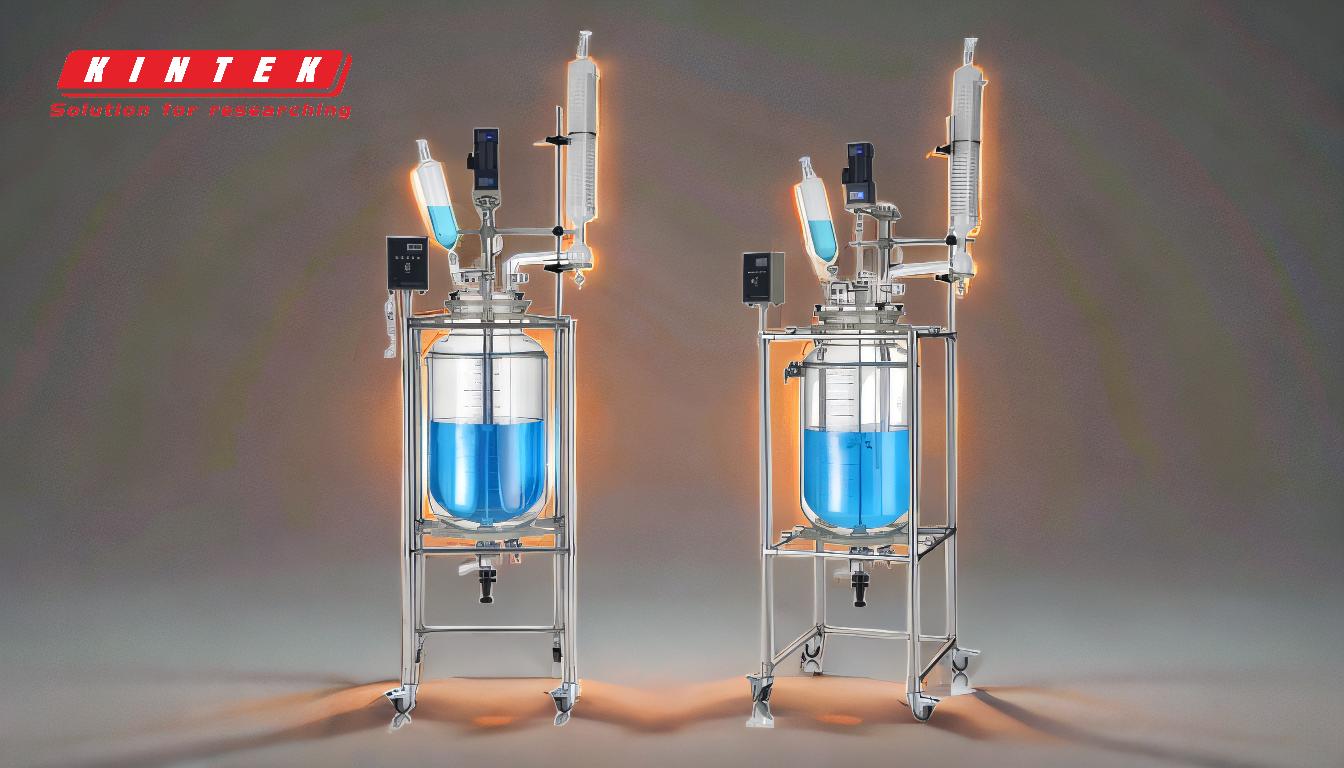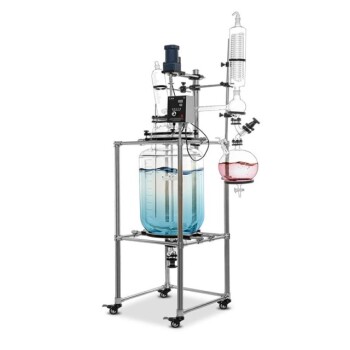A jacketed reactor, also known as a double-walled reactor, is a specialized vessel used in chemical and industrial processes to regulate the temperature of reactions. It consists of an inner vessel (core) that holds the reactants and an outer shell (jacket) that circulates a heating or cooling fluid. The primary purpose of a jacketed reactor is to provide precise temperature control, which ensures consistent and reliable results, especially when scaling up reactions. By maintaining uniform heat exchange, jacketed reactors enhance product quality, improve yield, and allow for efficient control of reaction conditions. They are widely used in laboratories, pilot plants, and industrial settings due to their versatility, ease of use, and ability to handle a wide range of temperatures and pressures.
Key Points Explained:

-
Temperature Control and Uniform Heat Exchange:
- The jacket in a jacketed reactor allows for the uniform exchange of heat between the fluid circulating in it and the walls of the vessel. This ensures that the temperature inside the reactor is consistent, which is critical for achieving reliable and reproducible results.
- By injecting a heating or cooling medium (such as water, oil, or other thermal fluids) into the jacket, the reactor can maintain a constant temperature, regardless of whether the reaction requires heating or cooling.
-
Scalability and Increased Yield:
- Jacketed reactors enable scientists and engineers to scale up reactions from laboratory to industrial levels. This is particularly important for processes that need to be reproduced on a larger scale without compromising quality or yield.
- The ability to control temperature precisely helps maximize the yield of the desired product by ensuring that the reaction proceeds optimally.
-
Versatility in Applications:
- Jacketed reactors are used in a wide range of applications, including chemical synthesis, pharmaceutical production, and food processing. Their ability to handle both high and low temperatures makes them suitable for various reactions.
- The materials used in jacketed reactors (such as glass, stainless steel, or other metals) can be selected based on the specific requirements of the application, ensuring maximum chemical resistance and durability.
-
Enhanced Product Quality:
- Precise temperature control minimizes the risk of side reactions or degradation of reactants, leading to higher-quality end products.
- The uniform heat distribution provided by the jacket ensures that all parts of the reaction mixture are exposed to the same conditions, further improving product consistency.
-
Space-Saving and Efficient Design:
- Jacketed reactors are designed to be compact and efficient, making them ideal for environments where space is limited.
- The ability to direct flow to specific portions of the jacket allows for targeted temperature control, which can be particularly useful in complex reactions.
-
Leak-Free and Easy to Use:
- The double-walled design of jacketed reactors ensures that the reaction mixture is contained within the inner vessel, reducing the risk of leaks.
- These reactors are user-friendly, with features that allow for easy monitoring and control of reaction conditions.
-
Potential for Automation:
- Jacketed reactors can be upgraded with automation systems, enabling remote monitoring and control of temperature, pressure, and other parameters.
- Automation not only improves efficiency but also reduces the risk of human error, ensuring safer and more consistent operations.
-
Wide Temperature and Pressure Range:
- Jacketed reactors can operate under a wide range of temperatures and pressures, making them suitable for a variety of chemical processes.
- This flexibility allows for the handling of reactions that require extreme conditions, such as high-temperature synthesis or low-temperature crystallization.
-
Energy Efficiency:
- The insulation provided by the jacket minimizes heat loss or gain, making jacketed reactors more energy-efficient compared to traditional reactors.
- This is particularly beneficial in large-scale industrial processes, where energy savings can significantly reduce operational costs.
In summary, the purpose of a jacketed reactor is to provide precise and uniform temperature control, enabling scalable, efficient, and high-quality chemical reactions. Its design, versatility, and ease of use make it an essential tool in both laboratory and industrial settings.
Summary Table:
| Feature | Description |
|---|---|
| Temperature Control | Ensures uniform heat exchange for consistent and reliable reaction conditions. |
| Scalability | Enables scaling up reactions from lab to industrial levels without losing yield. |
| Versatility | Suitable for chemical synthesis, pharmaceuticals, and food processing. |
| Enhanced Product Quality | Minimizes side reactions and ensures uniform heat distribution. |
| Space-Saving Design | Compact and efficient, ideal for limited spaces. |
| Leak-Free Operation | Double-walled design reduces the risk of leaks. |
| Automation Potential | Supports remote monitoring and control for improved efficiency. |
| Wide Temperature/Pressure Range | Handles extreme conditions for diverse chemical processes. |
| Energy Efficiency | Minimizes heat loss, reducing operational costs. |
Ready to enhance your chemical processes with a jacketed reactor? Contact us today to find the perfect solution for your needs!









